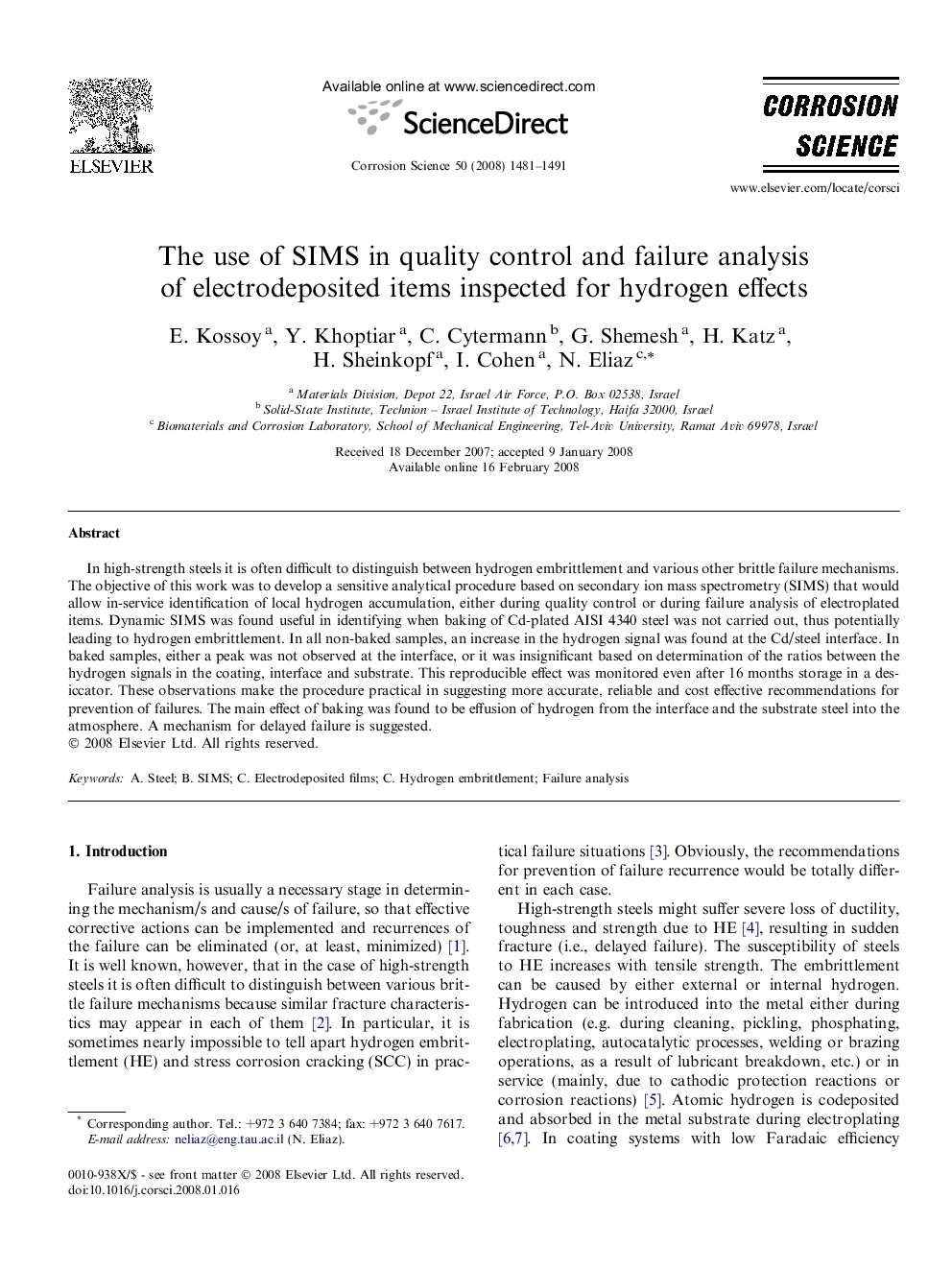| Article ID | Journal | Published Year | Pages | File Type |
|---|---|---|---|---|
| 1471786 | Corrosion Science | 2008 | 11 Pages |
In high-strength steels it is often difficult to distinguish between hydrogen embrittlement and various other brittle failure mechanisms. The objective of this work was to develop a sensitive analytical procedure based on secondary ion mass spectrometry (SIMS) that would allow in-service identification of local hydrogen accumulation, either during quality control or during failure analysis of electroplated items. Dynamic SIMS was found useful in identifying when baking of Cd-plated AISI 4340 steel was not carried out, thus potentially leading to hydrogen embrittlement. In all non-baked samples, an increase in the hydrogen signal was found at the Cd/steel interface. In baked samples, either a peak was not observed at the interface, or it was insignificant based on determination of the ratios between the hydrogen signals in the coating, interface and substrate. This reproducible effect was monitored even after 16 months storage in a desiccator. These observations make the procedure practical in suggesting more accurate, reliable and cost effective recommendations for prevention of failures. The main effect of baking was found to be effusion of hydrogen from the interface and the substrate steel into the atmosphere. A mechanism for delayed failure is suggested.
